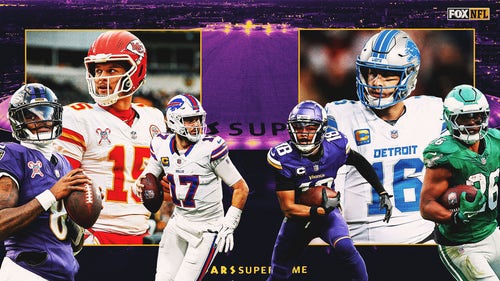Column: Only thing normal about golf's return is the score
FORT WORTH, Texas (AP) — Rory McIlroy and Dustin Johnson were together on the first tee Tuesday morning, just like they were three weeks ago at Seminole for a charity match that was the first live golf on television in 66 days.
This was different.
They were not wearing microphones and their caddies were at their sides, including Harry Diamond, who had been quarantined at McIlroy's guest house in Florida the last two weeks. They will be playing for a $7.5 million purse, along with more ranking points than have ever been distributed at Colonial.
This was real.
It just didn't seem that way.
With no spectators and limited access, it felt like Colonial had been rented out for a corporate outing, only the employees happened to be the best players in the world — McIlroy and Johnson, Brooks Koepka and Justin Thomas, Jon Rahm and Xander Schauffele — all eager to return to work.
Golf is back.
It's just not back to normal, and there's no telling how long that will take, or what that will even mean.
“You can't go into this thing thinking it's going to be normal because it's not,” Thomas said. “I would say 2020 is beyond a bizarre year so far, and especially in the world of sports. If we all want to get back and play the game that we love — and not just for us but for the fans and everybody at home — we’re just going to have to get over the fact that it’s going to be different and be a little weird.”
Weird was having a cotton swab on the end of a long, skinny stick that reached deep into the nasal cavity. This is a “condition of competition." In medical terms, it's a PCR test to detect active infection of the coronavirus, and every player, caddie and essential personnel has to take one upon arrival.
Ropes were in place, even without fans. Television cables run along the rope lines, and this helps keep mowers away.
Signs at Colonial preach social distancing, and this being golf, the signs said 6 feet (2 meters) was roughly two club lengths. Violations were plenty on Tuesday, from caddies and players riding next to each other in carts to the range, or a coach, caddie and player huddled together to set up a putting camera.
Then again, they're all in the “bubble” the tour is trying to create for the return to reduce as much risk as possible. All have been tested.
Ryan Palmer, a Colonial member chosen to hit the first tee shot, says he has been ultra aware of precautions during the three months the COVID-19 pandemic shut down golf. That didn't alleviate his anxiety after his test.
“I won't lie to you, I was kind of nervous waiting for the results,” he said.
Players talk about needing to get it right with more eyeballs than usual — motor sports is the only other major sport that has resumed in America. But there's only so much they can do. That's why Commissioner Jay Monahan said he was confident in the plan to return, but “we won't be comfortable until we're told we can be comfortable.”
More than one player said he felt a responsibility for golf to get it right. But that goes beyond the course of play, even with no one watching.
“I think golf is probably the most likely and best chance for things to be successful as possible over probably any other sports, just given you're outside,” Jordan Spieth said. "And then this weekly testing should keep guys clear. It's really up to you. It's on the individual. If you're going to go out to eat or go out to crowded places, you're going to risk potentially missing a few weeks.
“I have faith in the guys that are playing and that are within that bubble that they’re going to do what it takes within the week to ensure that they stay healthy,” he said. “And I think it’ll work well.”
Even in the quiet of a practice round that normally would be bustling with activity outside the ropes, the relief of being back to work was evident. Some players haven't seen each other in three months. Barring injury, this is as long as anyone has gone between tournaments.
Analogies to opening day are not far off. The year starts on Maui for tournament winners who at most have gone two months without playing. The new season typically starts a few weeks after the previous one. Even when the tour announced in April its plan to return at Colonial, there was no guarantee it would happen.
“It would be nice if we could get some fighter jets flying over the first tee shots, something like that,” Spieth said. “But yeah, it's got a little bit of that kind of excitement to it.”
The excitement will be internalized like never before. No spectators means no noise. Even for television, CBS anchor Jim Nantz said golf broadcasters often rely on the crowd reaction to determine the pitch in their voice.
Imagine a 20-foot putt on the 18th hole on Sunday and the celebration that follows — maybe not a lack of one, but certainly unlike anything golf has experienced.
It will be like that for five weeks, assuming the return goes smoothly and there's no reason — inside the world of golf or around the country — that it needs to shut down.
For now, they'll tee it up on Thursday. No mulligans. No gimmes.
“The 4-footer I have on the first hole matters,” Thomas said.
Just like normal.
And that might be the only normalcy left.








